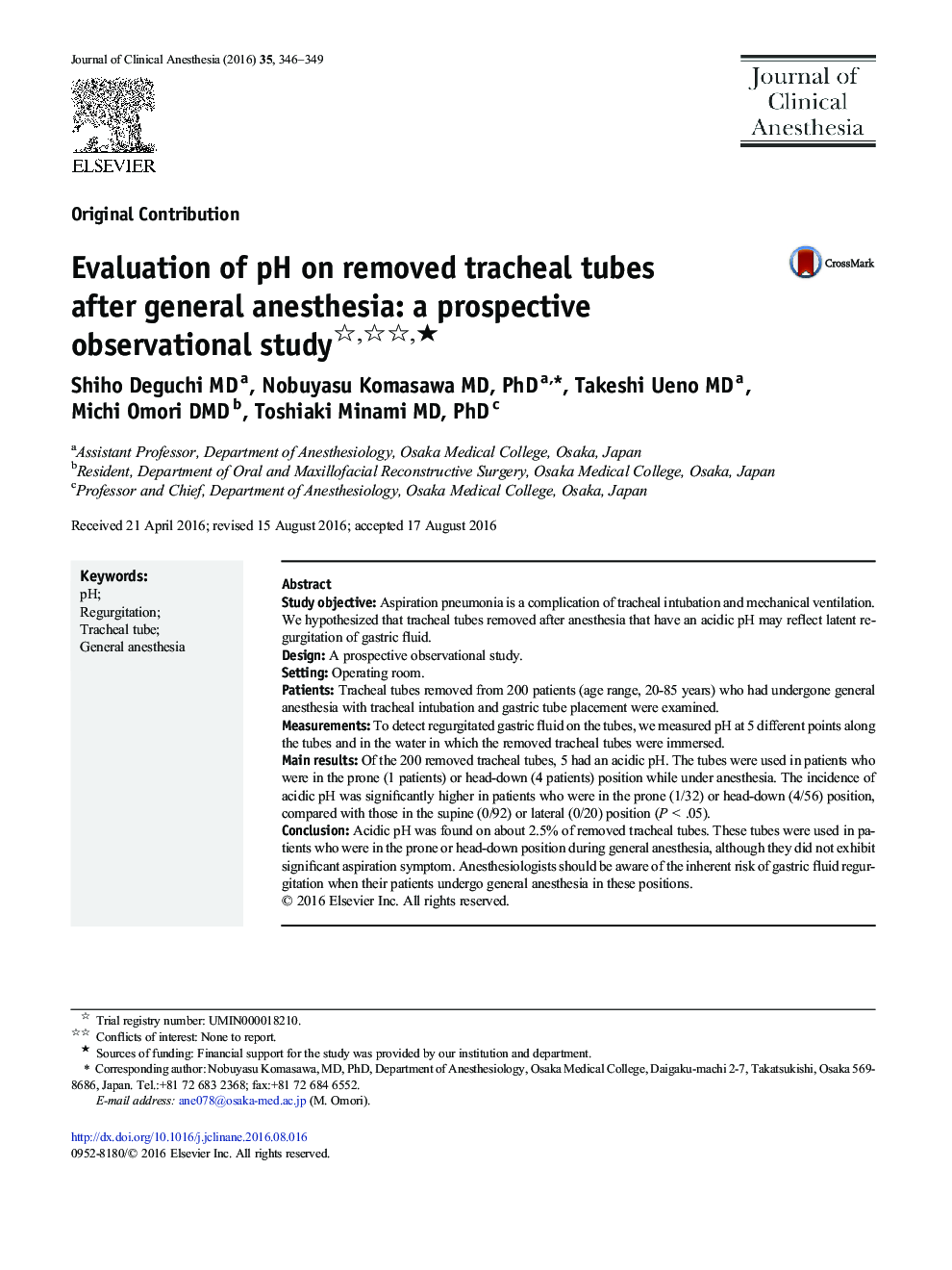| Article ID | Journal | Published Year | Pages | File Type |
|---|---|---|---|---|
| 5884313 | Journal of Clinical Anesthesia | 2016 | 4 Pages |
â¢Aspiration pneumonia is a complication of tracheal intubation and mechanical ventilation.â¢pH values of tracheal tubes removed from 200 patients were examined.â¢Of the 200 removed tracheal tubes, 5 had an acidic pH.â¢The incidence of acidic pH was higher in the prone or head-down position than that in the supine or lateral position.â¢Anesthesiologists should be aware of the inherent risk of gastric fluid regurgitation.
Study objectiveAspiration pneumonia is a complication of tracheal intubation and mechanical ventilation. We hypothesized that tracheal tubes removed after anesthesia that have an acidic pH may reflect latent regurgitation of gastric fluid.DesignA prospective observational study.SettingOperating room.PatientsTracheal tubes removed from 200 patients (age range, 20-85 years) who had undergone general anesthesia with tracheal intubation and gastric tube placement were examined.MeasurementsTo detect regurgitated gastric fluid on the tubes, we measured pH at 5 different points along the tubes and in the water in which the removed tracheal tubes were immersed.Main resultsOf the 200 removed tracheal tubes, 5 had an acidic pH. The tubes were used in patients who were in the prone (1 patients) or head-down (4 patients) position while under anesthesia. The incidence of acidic pH was significantly higher in patients who were in the prone (1/32) or head-down (4/56) position, compared with those in the supine (0/92) or lateral (0/20) position (PÂ <Â .05).ConclusionAcidic pH was found on about 2.5% of removed tracheal tubes. These tubes were used in patients who were in the prone or head-down position during general anesthesia, although they did not exhibit significant aspiration symptom. Anesthesiologists should be aware of the inherent risk of gastric fluid regurgitation when their patients undergo general anesthesia in these positions.
